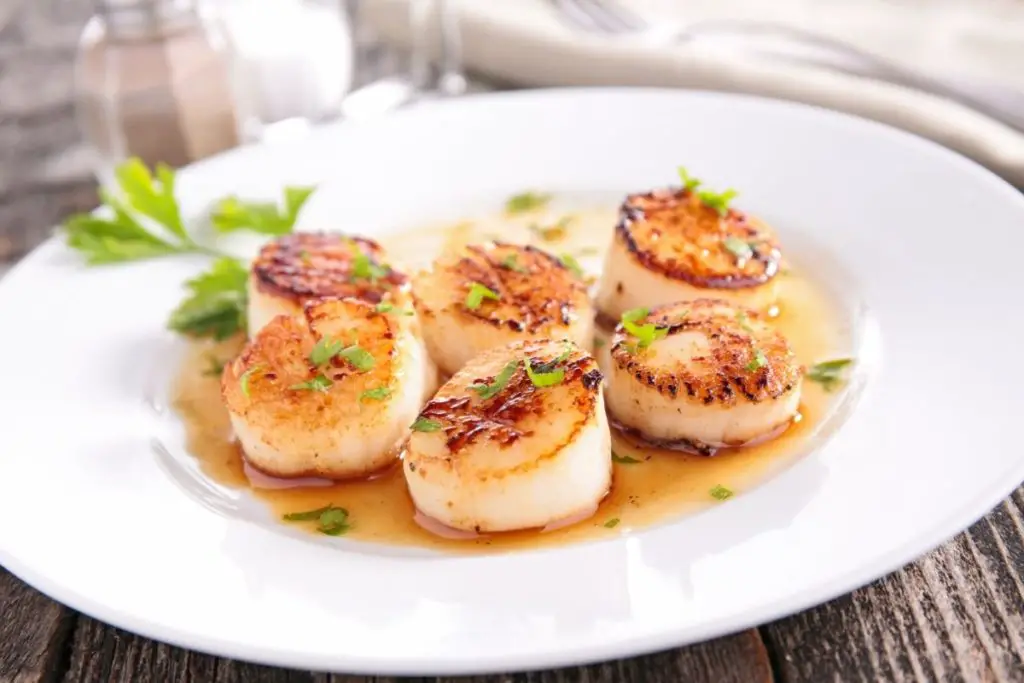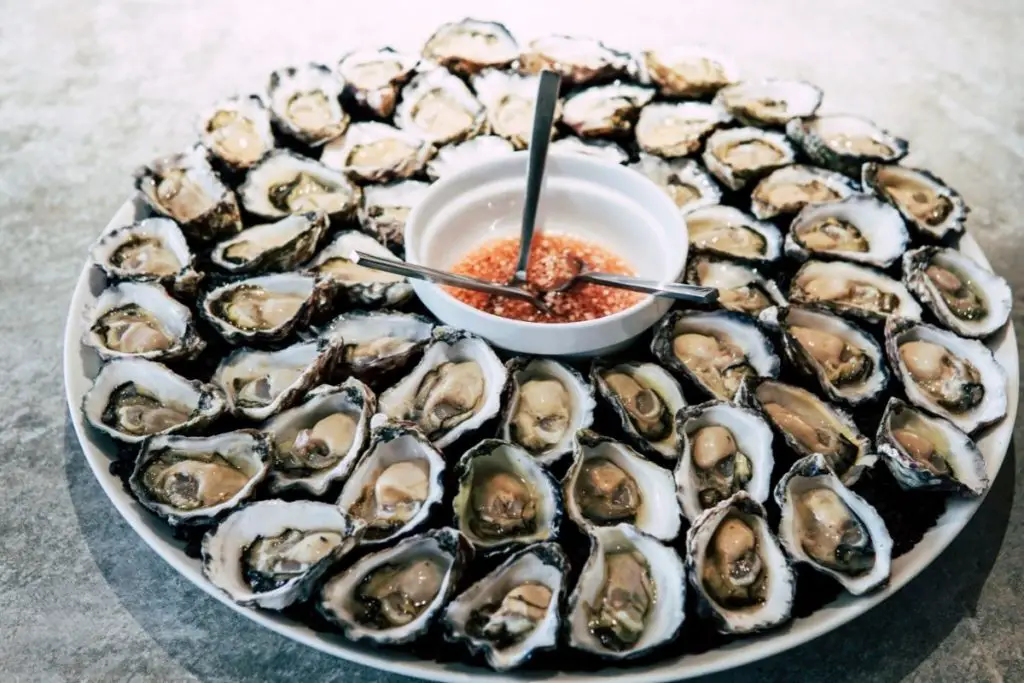Seafood is a smorgasbord of different types of animals and tastes.
In the same way that many of the animals that we call fish in our day-to-day lives have nothing to do with actual fish, seafood covers a massive range of animals that have next to no similarities with each other,
except for the fact that they are grown, caught and taken from our oceans. And if they come from freshwater sources like lakes and streams, even that’s negotiable in some cases!
There are so many creatures that we count in this giant of a food group. From cod to salmon, to carp, to prawns, to sardines, to crab, to lobsters, to mussels to squid, to snails, and so on and so forth.
You see the problem we face when faced with such a huge food group.

Although there is nothing wrong with creating a large food group to help categorize the things we eat, it can mean that we miss out on foods that we might otherwise love, if we think they may be too similar to other foods that they are actually nothing like.
Someone may turn down a cooked squid because they had a bad haddock once, and miss out on potentially amazing food that they have missed out on tasting.
Shellfish are a particularly guilty bunch when it comes to this issue. When someone dislikes just one of this large group of shelled foods,
they are unlikely to be too keen on trying another, even though the only thing many of them have in common is that they come prepackaged compared to other foods.
Just look at oysters and scallops, for example!
Many people are quick to assume that disliking one is a write-off for the other. When, in reality, they are two very different animals and, more importantly for our taste buds, are very different foods to eat.
That’s what this quick guide is for: To help show you the differences between the iconic oyster shellfish, and their somewhat less popular, but still just as delicious cousins, the scallop.
Oysters: A Short Introduction
Although we tend to think of oysters as just one specific kind of animal, that is actually not the case.
‘Oyster’, as we use the term in our everyday lives, actually refers to quite a large group of shelled mollusks that simply share a few features.
They are shelled mollusks, for a start, and tend to live in rocky formations where they establish colonies whilst still in their larval stage when they have more mobility.
They are best known for their very jagged and rough shells that form the shell that protects the small organism inside.
It’s this shell that defines them as part of the bivalve class of animals, which includes pretty much any shellfish animal that grows and lives whilst compressed between the two shells they live in for protection.
This family includes other common shelled foods such as clams, mussels, and, as we’ll soon find out, also includes scallops.
Whilst there are plenty of animals that are considered oysters, only a certain amount of them are considered ‘true oysters’. Outside this group, you have pearl oysters, the kind that, unsurprisingly, are farmed and used in making pearls.
Scallops: A Brief Introduction
Scallops are another type of animal that technically describes many species of shellfish that all share a few characteristics. They are best known for their ribbed shells that make them stand out from other shellfish, such as clams.
Like the oyster, the scallops are a large family of species of bivalved shelled mollusks, and, like oysters, are only ever found in slat and seawater.
They are, generally speaking, much more common than oysters, however, living on the ocean floor in pretty much any ocean and inland seas connected to them.
However, there is another thing that distinguishes scallops from other shellfish and makes them more than just a commoner’s oyster.
What sets scallops apart from many other species of shelled mollusks, is their ability to swim freely from an attached surface, and by what is known as ‘free-living’, using their shells to open and close to create movement, propelling them a short distance before they need to repeat the process.
This is actually how most species of scallops spend their lives swimming across short distances, either to find food or to escape other predators such as starfish.
Appearance And Shape
Simply taking a look at the shells and soft insides of these shelled delights will be enough to tell these delicious kinds of seafood apart.
Oysters have a very rough and bumpy texture to their shells, usually at least in part to their massive deposits of calcium and other minerals that have slowly built up as the creature has grown.
The soft inside that makes up the animal are typically a pale white, with some having a slight pink coloration in some cases.

Scallops, meanwhile, will have a much tidier appearance from the outside. Rather than the jagged, almost rocky appearance that the oyster has,
the scallop has a uniform ribbed pattern on both of its shells, making for a very neat and pretty design that is often incorporated into decorations and jewelry across the world.
The actual innards of a scallop are also usually some shade of orange or yellow, with some cases of more pale whites being found, depending on the specimen
General Habitat
Both of these shellfish live in seawater, with very few if any examples of these animals living inland in freshwater.
However, how the two animals live is very different.
The oyster is a sedentary species once it has found its rocky outcrop that it chooses to live in, and will live by filtering water and microscopic life forms that float its way thanks to ocean currents.
The scallop, meanwhile, lives quite differently, with most species swimming freely whilst filtering plankton through the cilia at the front of the shell that leads plankton to the mouth. Compared to many other bivalve mollusks, they are pretty active!
Taste, Texture, And Nutritional Benefits
It should be prefaced that, unless prepared in the right manner, eating either of these shellfishes can be a hazardous food to swallow.
Often, shellfish live in areas where the waters are contaminated with minerals or parasites that are dangerous to consume. This is why you will sometimes find restaurants state that they are qualified to prepare shellfish-based foods.
So, with that out of the way, let’s compare how scallops and oysters feel and taste in the mouth, and discuss what health benefits each one has!
The oyster is probably the best sauce of zinc for the human body that is found in the wild, as well as a source of potassium and phosphorus too.
When they are eaten, thanks to their almost buttery texture, they are regularly slurped and have a velvety texture to them in your mouth. Depending on where and how the oyster was grown and farmed, they can be briny, or even a little sweet in texture.
Scallops are also a pretty good source of zinc to the body, as well as magnesium and tons of protein.
In terms of texture and taste, scallops are actually more like fish than they are oysters. This is mainly because the part of scallops that is eaten is mainly muscle, much like the body of a fish.
Because of this, you can expect a surprisingly fishy taste in this shellfish. And in the best possible way too!
Other Facts And Differences
Both scallops and oysters can make pearls, although they are rare in scallops, and only a specific pearl oyster can make them.
The main difference between the two is that scallop pearls do not have the same iridescent layer that gives pearls their alluring color and value, leaving scallop pearls looking more bony white by comparison.
Whilst beauty is certainly in the eye of the beholder, it’s not too surprising to see why oyster pearls are valued a little higher.
Conclusion
So, there’s plenty to separate these two shellfish, once you get into the nitty-gritty of them both.
However, whatever separates these two shellfish, one thing is for certain:
They both go great with lemon.
